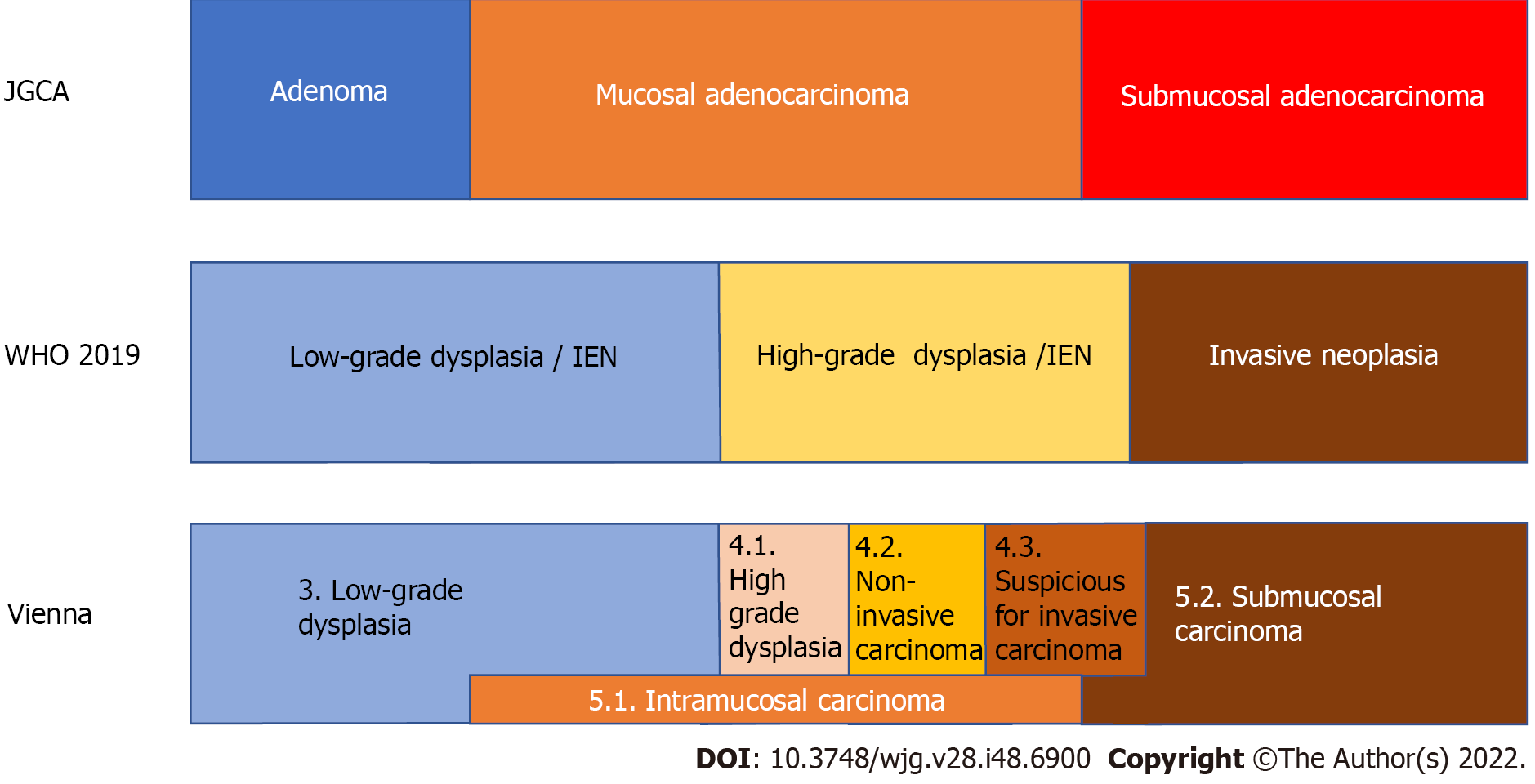Copyright
©The Author(s) 2022.
World J Gastroenterol. Dec 28, 2022; 28(48): 6900-6908
Published online Dec 28, 2022. doi: 10.3748/wjg.v28.i48.6900
Published online Dec 28, 2022. doi: 10.3748/wjg.v28.i48.6900
Figure 1 The relationship of the diagnosis of superficial gastric lesions between the Japanese classification of gastric carcinoma by the Japanese Gastric Cancer Association, the WHO classification, and the Vienna classification.
In Japan, gastric cancer is diagnosed based on cellular and structural atypia. On the other hand, outside Japan, dysplasia is used to describe lesions that are histologically probable neoplastic lesions without evidence of invasive growth. Intraepithelial neoplasia is a synonymous condition. Therefore, all mucosal and some submucosal cancers diagnosed by the Japanese Gastric Cancer Association criteria are diagnosed as dysplasia outside Japan. The original Vienna classification is the answer to this discrepancy by setting non-invasive carcinoma and intramucosal carcinoma. IEN: Intraepithelial neoplasia; JGCA: Japanese Gastric Cancer Association.
- Citation: Kinami S, Yamada S, Takamura H. Confusion and prospects for carcinogenesis of gastric adenoma and dysplasia: What is the correct answer currently? World J Gastroenterol 2022; 28(48): 6900-6908
- URL: https://www.wjgnet.com/1007-9327/full/v28/i48/6900.htm
- DOI: https://dx.doi.org/10.3748/wjg.v28.i48.6900









